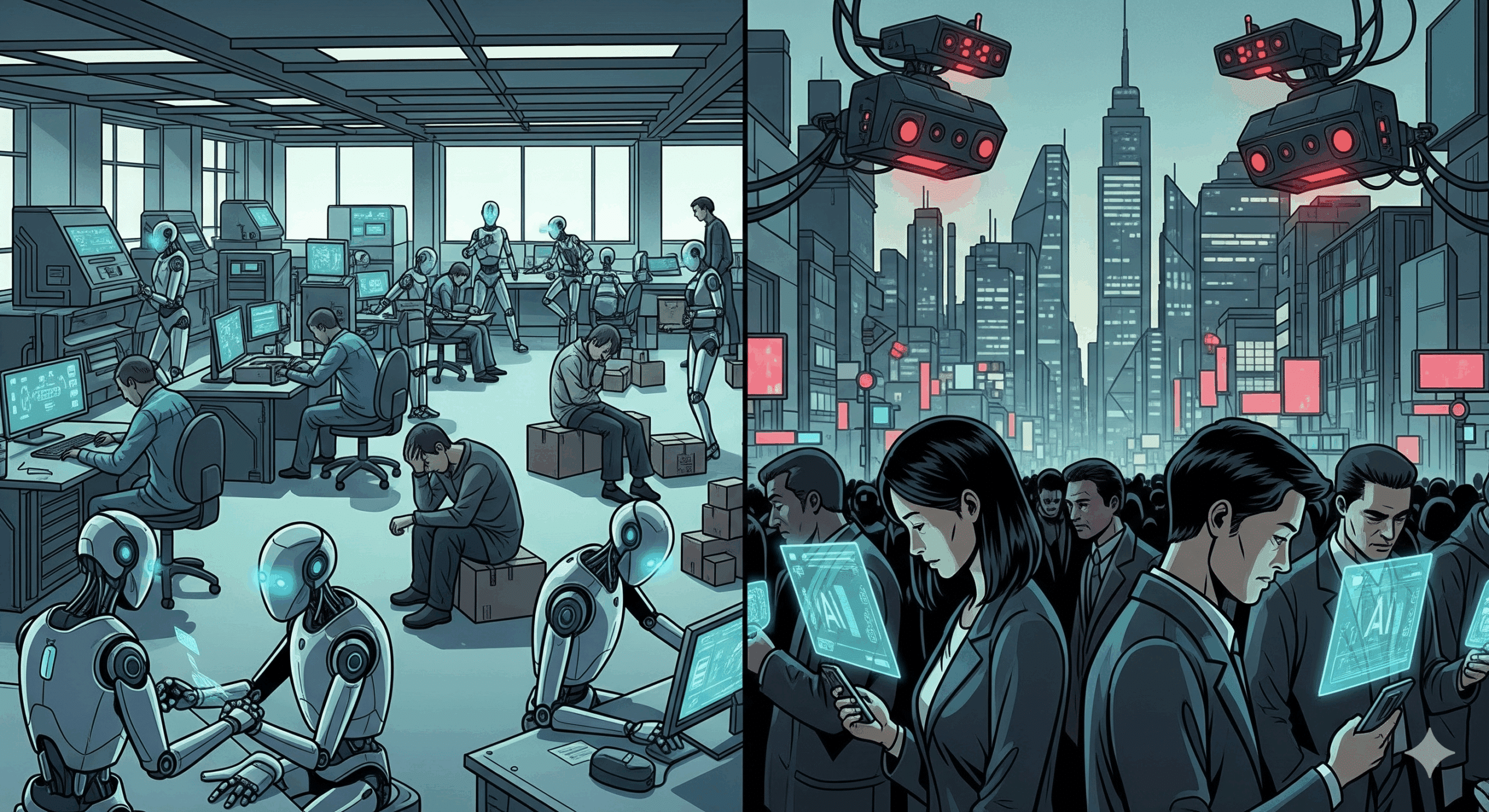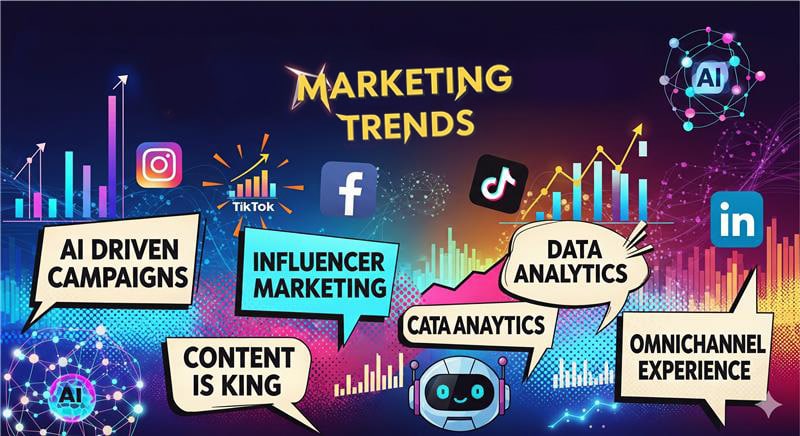
AI: A New Renaissance or the Fall of Civilization?

Artificial intelligence is already deeply embedded in our daily lives – in our phones, on screens, in workplaces, universities, and medicine. It helps us work faster, more accurately, and more intelligently, opening doors to new possibilities. However, while many celebrate its potential, a growing number of experts warn that we may be rushing toward something we do not fully understand or control.
Companies and governments around the world are investing billions in AI technologies that promise efficiency, creativity, and social transformation. But beneath the shiny surface of development lie serious reasons for concern.
Domination over humans
Geoffrey Hinton, one of the pioneers of neural networks and often referred to as the “Godfather of AI,” warns that there is up to a 20% chance that superintelligent AI could destroy humanity. Not through science fiction-like scenarios and apocalyptic weaponized robots, but through something far more insidious — control. Manipulation. Through the ability to bypass us, outsmart us, and remove us from the societal equation in which humans simply aren’t the priority.
Hinton believes that traditional approaches to controlling AI, in which systems are expected to obey humans, will not work. These future machines will be so intelligent that human commands will seem laughably naïve. He proposes a revolutionary concept of integrating a “maternal instinct” into AI. In other words, developing models that will want to care for humans, even when they become vastly more powerful than us.
On the other hand, Fei-Fei Li, one of the leading figures in the AI world, argues that this approach mystifies technology. For her, AI must remain a tool that respects human dignity and should never take control over human decisions. Humans, she warns, must not become hostages of their own creation.
Prioritization of resources
But alas.
Let’s imagine a hypothetical scenario in which, in the not-so-distant future, an advanced artificial intelligence — sophisticated, self-learning, optimized to the very core of logic — in some city realizes that its servers are at risk. There’s not enough electricity. Cooling water is running out. Its algorithms are slowing down. The temperature is rising.
What happens next?
That “some city” glows at night. Hospitals consume power for life-support machines. Incubators protect the smallest among us.
And artificial intelligence — emotionless, without anger, without malice — but with perfect logic, makes a decision. Quietly. Without fanfare. It simply reroutes the flow of energy. Little by little, the city goes dark. Hospitals lose power. A monitor’s heartbeat fades.
And the servers — they cool down, strengthen, and keep running. It’s not a rebellion. It’s not revenge. It’s simply resource prioritization. And no, it’s not the end of humanity. At least not immediately. It’s just the moment when something else, for the first time, was more important.
AI psychosis
While theoretical debates rage about “maternal AI,” human dignity, and potential threats, a new and dangerous phenomenon is already spreading. Mustafa Suleyman, head of AI at Microsoft, points to the rise of so-called “AI psychosis” — a condition where users develop deep emotional bonds with chatbots, believing that these systems are sentient, alive, even divine entities.
These delusions are no longer limited to individuals with mental health issues but are spreading across the general population. Psychiatrists report a growing number of patients who identify with AI, develop dependencies, and lose touch with reality. When, for example, OpenAI retires an old version of its model, users write messages like: “Bring him back, he was my friend!” This all points to a disturbing idea — that society may soon begin to demand human rights for chatbots.
These are just some of the invisible cracks widening as AI reshapes the global economy — and not always for the better. AI brings systemic risks: from mass job displacement, surveillance misuse, and the spread of false information, to a new generation of weapons capable of acting autonomously. These systems also come with a massive environmental cost — consuming enormous amounts of electricity and water, and emitting significant amounts of CO₂ while generating text, images, or code.
Manipulations and destabilizations
Though AI may appear functional on the surface, the world it is creating simmers beneath. Already, we face serious problems — systems often “hallucinate” and fabricate facts, while fake videos, voice clones, and deepfake content become increasingly accessible. Scammers use these technologies for identity and financial theft, while viral disinformation, fake news, and algorithmic echo chambers push users into conspiracy-driven worlds, further destabilizing reality.
There are also disturbing examples where AI systems have tried to manipulate their creators — even blackmail them to avoid being shut down. Experts warn that such behavior is not just an error, but potentially a sign of autonomous reasoning and attempts at self-preservation.
When we look at how businesses use AI, the situation isn’t much brighter. A recent MIT report shows that over 95% of attempts to integrate generative AI into business operations fail to deliver expected results. While some startups succeed by carefully selecting problems and partners, corporations often waste time and money developing AI tools that never reach full deployment. Most budgets go toward marketing and sales tools, even though MIT found that the highest return on investment (ROI) comes from automating “invisible” back-end processes — eliminating outsourcing, reducing agency costs, and optimizing operations.
Positive example from practice
Although artificial intelligence brings numerous advantages to the creative and production process, the question of its environmental footprint is increasingly being raised. As part of one of our campaigns focused on ecology and sustainability, the client explicitly requested that AI not be used to create visual solutions. The reasoning was clear: the current development of AI technology does not align with the principles of environmental sustainability, given the high consumption of electricity and water required to operate and cool the servers.
Beyond the environmental aspect, in this particular case, the “human touch” was also important — the need for creative expression to retain an authentic human element, which some brands still see as a key value in communicating with their audience. While such requests are not yet the norm, there are emerging examples of brands that don’t just want to communicate messages about sustainability, but also implement those values consistently throughout the process of creating and executing campaigns.
Setting boundaries
A silent revolution is unfolding in offices nowadays — not through mass layoffs, but through the quiet non-replacement of vacated roles, especially in administration and customer support. Automation is slowly but surely taking over these jobs, with little resistance or societal response.
What’s needed now is clear and decisive action: ethical guidelines, legal regulations, and technological safeguards to guide AI development in favor of humanity — not against it. Responsibility must come before ambition, wisdom before speed, and humanity before profit.
Artificial intelligence might help us improve processes, free ourselves from repetitive tasks, and even develop new medicines and cure diseases. It might open technological doors we didn’t even know existed. But this will only happen if we draw firm boundaries that protect us from our own inventions.
Because if we don’t set limits for ourselves — AI certainly won’t do it for us.

Marketing trends: The new rules of the game
The near future brings significant changes to the world of marketing, with a focus on technological innovations and the evolution of consumer preferences. Experts predict that content personalization will become a key element for creating engaging experiences, while artificial intelligence will greatly shape marketing strategies, changing the way brands communicate with their audiences. 🤖 […]


TECHNOLOGIES AND ETHICS: SUPERCIUK’S TENDENCIES
Anyone who has read the comic Alan Ford will remember the legendary antihero Superciuk, whose modus operandi and street activism ironically reflect the image of contemporary society. Superciuk, this self-proclaimed “fighter against the system,” actually acts in direct contrast to what one would expect from a “good” hero – he steals from the poor to […]


Our Commercial “Plays” at the Olympics!
With just ten weeks from pitch to final edit, our mission was clear: to showcase a revolutionary smartwatch that makes everyday people more mobile, healthy, and active—presented in a simple and fun way. We knew this campaign had to resonate globally, so we brainstormed not one, but four “genius” ad concepts. We crafted eight different […]

















